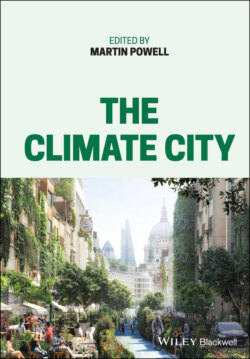Читать книгу The Climate City - Группа авторов - Страница 24
Ambition and Clarity at the Global Level
ОглавлениеProviding net-zero context at the global level, the Paris Agreement, agreed in 2015 and ratified the following year, created a vital destination-based target for the world. It set the objective of “Holding the increase in the global average temperature to well below 2°C above pre-industrial levels and to pursue efforts to limit the temperature increase to 1.5°C …” by achieving “a balance between anthropogenic emissions by sources and removals by sinks of greenhouse gases in the second half of the century, on the basis of equity, and in the context of sustainable development and efforts to eradicate poverty”.9
While the first phrase, from Article 2, outlines the temperature target, Article 4 effectively defines net-zero GHG emissions as reducing human-caused emissions to the level that natural climate solutions and other methods of CO2 storage and removal can effectively absorb. It succinctly describes a global state of ecological balance, even if the results of past emissions have not been fully absorbed. If this state is achieved by mid-century, and if emissions decline further to net-negativity in the back half of the century, maintaining a 1.5°C world becomes likely.10
Paris-Agreement goals build on strong conclusions from the Intergovernmental Panel on Climate Change’s recent assessment11 and the US government’s own 4th National Climate Assessment.12 A recent report released in BioScience 13 listing 11,000 scientists as contributing authors was equally unequivocal. We must adjust course dramatically and achieve net-zero emissions by 2050 if we are to avert the worst impacts of climate change and remain on target for 1.5°C of warming. These global goals transmit across language, culture, and ideology. They are vital to the transition to a sustainable world, but their applicability and measurability tend to burn off on impact as they enter a single enterprise.
